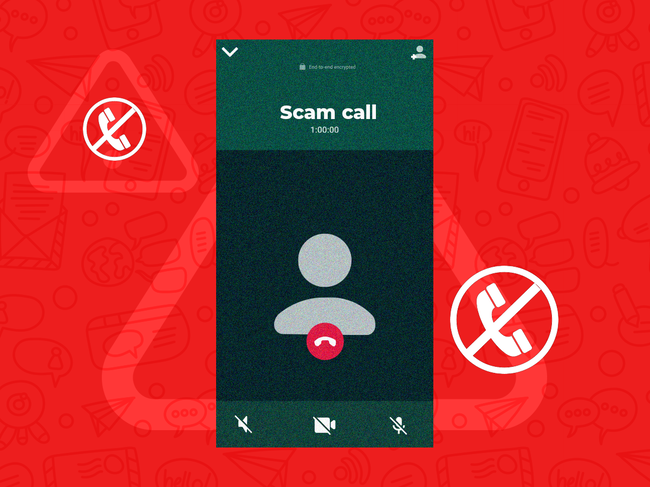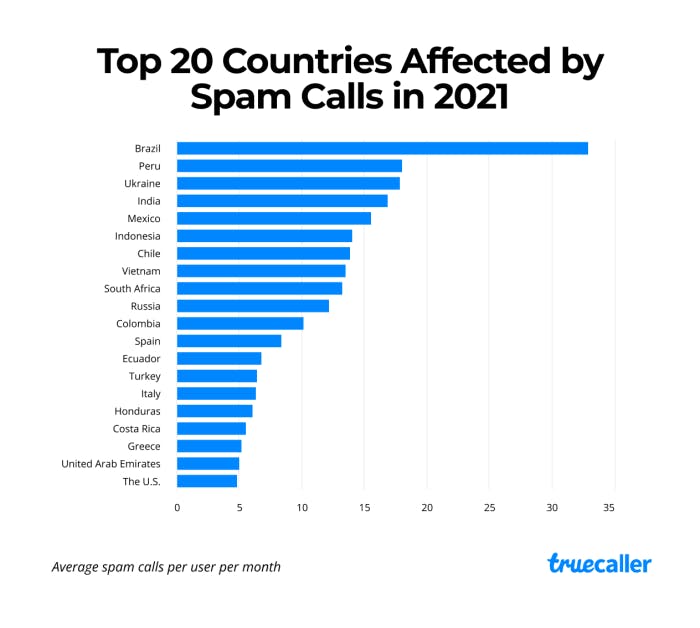TRAI Tried, But Failed, Till Date! Why Is DND A Complete Failure And Mockery In India?

TRAI introduced the concept of a DND registry under its unsolicited commercial communication guidelines, but it has been suboptimal for a long time.
Most of us have received and still receive unsolicited messages or calls to the extreme effect that the person, on the other hand, sells insurance on the pretext of your death while you are talking to them. They hover from frisky to pesky to risky and whatnot. Then came the DND- Do Not Disturb. However, it could not keep the promise that the name holds. By this action or strategy, the telecom regulator was supposed to keep our mobile privacy and not want us to be disturbed. Yet, there is quite a silence from the regulatory body that is supposed to take care of this DND enactment. And that emerges as a big failure!
The TRAI (Telecom Regulatory Authority of India) has this concept of DND failing until such a limit that consumers seem to have forgotten that such a concept actually exists and could work.
As per the 2021 Global Spam and Scam report by Truecaller, India ranked 4th in the top 20 countries to be receiving spam calls. One figure in particular stood out in this report: one spammer in India was responsible for almost 202 million spam calls. From a single phone number, spam calls disrupted approximately 664,000 individuals daily and 27,000 people hourly.
According to a news article dated February 2024, a LocalCircles survey found that about 90% of respondents reported receiving pesky calls from individuals selling financial services, real estate projects, and other things while being on the Do Not Disturb list. The survey, which included seven questions, claimed to have garnered 60,000 responses from 378 districts; however, the number of respondents fluctuated depending on the topic.
In answer to a question about the number of calls individuals receive, 90% stated they get at least 1-2 calls each day, while 3% claimed they receive more than 10 annoying calls per day. Similarly, 90% of respondents reported receiving unsolicited, annoying, sales promotional, or robocalls on their cell number in the last 12 months despite being on the Do Not Disturb (DND) list.
According to the survey, calls from various mobile phone numbers that appear to belong to companies/brands increased from 29% in February 2023 to 36% in February 2024. 48 per cent of mobile users reported receiving the bulk of unwanted phone calls from various cell numbers that appear to belong to individuals. According to a survey, the DND service is ineffective in the sense that subscribers receive unwanted calls from personal mobile numbers rather than landline or commercial numbers belonging to a specific brand, resulting in the DND system being bypassed altogether.
According to recent data, just a few days ago, the Centre put guidelines for curbing the pesky call menace in the public domain. The guidelines will hold telemarketers and their principal entities accountable when they deliver promotional or transactional messages or make such calls to convert customers. Principal entities may include banks, real estate firms, or any other business that interacts with consumers.
Truecaller and Trai’s Do Not Disturb, or DND 2.0, apps enable users to report spam calls and texts and then utilise crowd-sourced data to alert users to the blacklisted numbers. However, these tools aren’t entirely effective.
Where are the loopholes?
Marketers make many connections and constantly switch SIM cards. Some operators offer free SMS and unlimited calling, which allows such networks to survive at a cheap cost. Existing guidelines compel telemarketers to register their phone numbers and check the DND registration before making unwanted calls. However, many unregistered telemarketers operate outside of the system. Even if customers report them, they swiftly change their numbers, making regulation impossible. This persistent failure can be attributed to the lax attitude of the operators.
Data dynamics and dread.
Earlier in the year 2020, media reported that a cyber security startup head found a file having over 9 crore phone numbers registered with the National Do Not Call (NDNC) registry, now The National Customer Preference Register (NCPR), kept on sale on the Darknet! The data have been purportedly positioned on sale on the dark web for a money of less than $10. As a statistic, while we pride ourselves on the fact that India has over 118 crore mobile connections at that time, it is conserving to note lax database security.
If a regulator is unable to keep its data secure, it jeopardises its customers’ confidence and security. Despite its technological strength and inventiveness, the country’s failure to protect telecom users’ privacy, particularly those who want it, is an act of failure. TRAI stated that they had implemented blockchain-based technologies to address the issue. Ironically, it can’t even block those annoying texts or calls!
Policies, but not effective!!!
The TRAI is getting serious about spam, again. In February, it suggested that all network operators adopt caller name display service on mobile phones, and that all smartphone manufacturers offer this capability within a set timeframe. Combating unsolicited calls and texts is nothing new for Trai, which has used every advanced weapon from blockchain to artificial intelligence.
However, quick-footed spammers have always been a step ahead, and unsolicited texts and calls continue to flood the phones. In 2018, Trai announced distributed ledger technology (DLT), a unique blockchain-based architecture that ensures consent-based calling and messaging while also creating commercial potential for corporations and telcos.

It took three years to completely implement DLT. Three years later, in 2024, it is still being criticised for being unsuccessful, not only because to changing sender tactics, but also due to basic issues that were not addressed during the technology’s development.
Why did this big technological solution fail? How does TRAI intend to mitigate damage?
At the core of spam is businesses’ primitive need to pitch themselves at every customer contact point, from text messages and messaging apps like WhatsApp and Telegram to phone calls, emails, browser pings, and in-app alerts.
Companies demand cost-effective ways to spam users in order to increase conversions and upsell and cross-sell products and services. Nonetheless, basic SMS text remains the most popular option for workplace communicating worldwide. This comes with risks. SMS is the most common kind of phishing in India. According to Sunil Bajpai, chief trust officer of Tanla Platforms, more than 150 million phishing messages are sent out each month, leaving 60-75 million unique individuals exposed to assaults. Every month, between 100,000-300,000 individuals are potentially defrauded, but only 35,000-45,000 report it.
Blockchain V/S ‘Block In The Chain’- The TRAI tried but failed!
Trai’s 2018 legislation was truly unusual—it was the first-of-its-kind blockchain use case to be adopted in the world’s largest telecom market, which handles over 1.5 billion SMS messages every day. However, it shifted the task of finding solutions to telecom companies. They had no prototype to learn from, which needed time and money. They needed to discover a method to integrate blockchain without losing business. Enterprise messaging, for example, was the primary source of revenue for telecoms when personal texting switched to services such as WhatsApp.
While telecoms were venturing into unknown terrain, various telemarketers, aggregators, and even businesses such as Paytm filed lawsuits contesting several aspects of TRAI’s legislation. It was only in 2020 that technology devices were ready to onboard corporations and started parsing live SMS traffic through a decentralised ledger of registered enterprises (for example, HDFC Bank), SMS headers (VKHDFCBK) and message templates (Hi, Your account balance is…)
The Covid pandemic created some problems, but the system was back up and operating in early 2021. Nearly 2.7 lakh companies have migrated to the new platform. Initially, the new administration imposed various regulations.
As a consequence, subscriber complaints against registered senders—telemarketers who have registered with TRAI to transmit bulk commercial communications—fell dramatically between 2021 and 2023, while clean traffic volumes reached new highs. It was discovered that complaints had decreased from 200,000 per month to barely 30,000 then.
“The DLT tool also became a significant resource for spotting unlawful grey pathways, and even enabling the Ministry of Home Affairs to find Jamtara-type scammers,” referring to Jamtara, a town in Jharkhand that became famed as a centre of digital fraud. To get around this, spammers began utilising 10-digit cellphone numbers. They were no longer registered with the TRAI. Complaints against unregistered senders totalled 8-9 lakh each month.
There was another reason why spam messages increased. Price disputes among carriers resulted in a surge of unchecked header and template registrations,” states a telco executive.
Reliance Jio enabled for free header and content template registration, and around 5 million templates were available for exploitation by unsolicited senders. A single bank registered around 20,000 templates. Some have been inactive for more than six months. The casual attitude of even respectable enterprises contributed to the accumulation of waste on DLT. At the time, Rajdip Gupta, CEO of cloud communications provider Route Mobile, described DLT as a “major disaster.”
TRAI attempted to clear up the mess in February 2023, ordering operators to delete inactive, irrelevant, and fraudulent headers and templates. It also required AI-powered identification of scam and fraudulent messaging. Vodafone Idea and Bharti Airtel showcased distinct techniques for detecting scams with 99% accuracy. However, it haven’t given odesired output and hence TRAI tried but failed.
This implies that subscribers will be able to designate when they want to receive marketing messages from a certain company—for example, between 9 a.m. and 5 p.m. on weekdays. Unfortunately, it never took off or reached subscribers.
Is it only spam, or could it get into a scam?
Getting spam calls and messages is definitely irritating, but what if these spammers used their techniques to scam people? One of the most prevalent scams in the country is the ever-popular KYC (know your customer) scam, in which fraudsters claim to be a bank or digital payment provider and request user KYC documentation, as required by the Reserve Bank of India. Furthermore, multiple Truecaller user reports state that scammers in India typically lure unsuspecting victims under false pretences (OTPs, online sales, lotteries) and convince them to download a remote access app, resulting in a massive loss of money from banks, cards, and digital mobile wallets.
So curse the company, the operator and the regulator for the spam calls and messages. But Thank God if you haven’t been caught in the scam racket!
So what’ the solution to get rid to these spam calls?
One would obviously say ‘do not answer’. But is it really possible? Aside from disrupting the flow of work or upsetting an afternoon nap, such calls are also detrimental to many other callers who are attempting to contact us for valid reasons. This includes delivery guys, utility and service providers such as plumbers and electricians, as well as the occasional school friends who is not on the contact list. That’s because we’re so sceptical of calls from numbers we don’t recognise that we usually refuse to answer them, or worse, block them, which isn’t a solution.
At one point, one may try to reason with some of the callers, explaining that acquiring their phone number and phoning them without their express consent constituted fraud and an unlawful activity. A few would even accept the argument and apologise, frequently making us feel terrible for them. After all, they were only doing their jobs for a penny. In any case, there are many automated communications now, which implies there is no room for interaction.
The true perpetrators are those who share and sell the data, which are mostly banks and credit card corporations. The data purchasers are also at fault. Finally, telecom providers have persistently refused to accept responsibility for this danger and take any action to prevent such calls at the network level. The less said about the regulator, the better. The much-hyped TRAI do-not-disturb, aka DND register, has proven to be a total failure.
In the face of such malicious negligence, the consumer is forced to deal with the onslaught of spam calls on their own. Hopefully, TRAI will see the critical need to make the DND concept successful. Building trust in the regulatory structure is essential before it rusts!
It appears that we have adopted Gen Z’s concept of the phrase ‘DND’ as SMS jargon to indicate the Hindi word ‘dand’ (punishment), and this is what is now being communicated to customers. Can TRAI attempt to pull us out of this DND mess? Or should the customers accept that DND was a complete failure?






